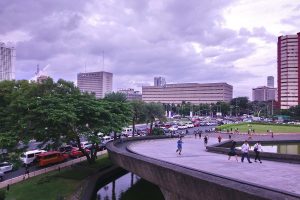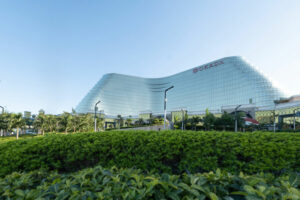DoTr’s proposed 15-year NAIA concession won’t do much, says consortium

A 15-YEAR concession period proposed by the Transportation department and the Manila International Airport Authority (MIAA) will not significantly transform the Ninoy Aquino International Airport (NAIA), according to a consortium backed by six conglomerates, saying that a 25-year concession period is a more practical option.
“Under a 15-year concession period, the passenger service charge increase will be more abrupt than say a 25-year concession period,” Kevin L. Tan, Manila International Airport Consortium (MIAC) director and Alliance Global, Inc. chief executive officer (CEO), said on the sidelines of a media briefing on Monday.
“Honestly, I think that a 15-year concession period will not really do much in terms of transforming the airport. We have already studied that before and we have actually backed out of that proposal because we don’t think it would be meaningful for the Filipinos,” he added.
Mr. Tan was referring to the joint proposal submitted by the Department of Transportation (DoTr) and the MIAA to the National Economic Development Authority.
Under the P141-billion solicited proposal of the two government agencies, the private concessionaire will have 15 years to operate the airport and recover its investment.
Sought for comment, DoTr Undersecretary for Aviation and Airports Roberto C.O. Lim said in a phone message: “A 15-year concession period is adequate to improve passenger experience to meet international standards and increase the runway and terminal capacity through investment in technology, innovation, digitalization, deployment of equipment and passenger processing systems which are already in use in other airports.”
“DoTr and MIAA are also open to a longer concession period under defined circumstances warranting its extension,” he added.
On April 27, the MIAC, composed of Aboitiz Infracapital, Inc., AC Infrastructure Holdings Corp., Alliance Global–Infracorp Development, Inc., Filinvest Developments, and JG Summit Infrastructure Holdings Corp., and the Global Infrastructure Partners, submitted an unsolicited proposal for the rehabilitation of NAIA.
PROJECT COSTIn the regulatory filings posted by the companies in April, they said that the proposal was valued at over P100 billion. Filinvest Development Corp. said in a disclosure on Monday that it solely referred to the initial investment throughout the first five years.
“Maybe there’s a confusion on the project’s cost, but the project cost involves the upfront payment of P57 billion and the around P211 billions of development cost. The initial proposal was like that, nothing changed,” Cosette V. Canilao, president and CEO of Aboitiz Infracapital, told reporters on Monday.
According to Mr. Tan, the MIAC will offer both significant unprecedented capital and economic value in its unsolicited proposal.
The consortium will make an upfront concession payment of around P57 billion, “a never-before-seen amount for any upfront concession payment,” he said.
The proposal also includes a P57 billion in committed capital for rehabilitation in the first five years of operations, as well as P154 billion in long-term capital commitments through 2048.
The project is also seen to contribute around P280 billion from ongoing revenue shares and taxes and P258 billion from net economic benefits such as employment creation.
“These equate to over P805 billion [in value] through a 25-year concession period. If you notice, a lot of the investments come in the beginning part and then the rest come towards the first five years and then beyond. The investments are slightly frontloaded in order for it to really really have a meaningful and transformational change for NAIA,” Mr. Tan said.
MASTERPLANThe consortium said that the NAIA masterplan will have multiple phases centered on the P267- billion investment.
Its three main development phases will include improvements to capacity and reliability as well as the overall experience of passengers.
The first phase of the masterplan, called “Quick Wins,” will be implemented over the first two years with the goal of quickly increasing the airport’s capacity to 54 million passengers per annum (MMPA) by 2025 from the current P31 MMPA.
The initial phase will cover the improvements and optimization of processes, introduction of new concepts and technology, airfield upgrades, facade refreshing, and landscaping, among others.
For the second phase, the consortium is looking to increase the capacity of the airport to 62.5 MMPA by 2028 through expansion and development of the terminal floor area of Terminals 2 and 3, airfield facilities and enhancements to cross-terminal transportation.
The last phase targets to increase the airport’s capacity to 70 MMPA by 2048 and covers long-term expansion and development such as the additional expansion of Terminals 1 and 2 and airfield and runway upgrades.
According to the consortium, the terminal annex will receive 52% of the P57 billion in capital expenditures (capex) for the first five years, followed by civil works (24%), asset renewals (7%) and people mover system (4%) and “Quick Wins” (5%), with the remaining 8% going to other expenses.
Meanwhile, the estimated capex split for the P211-billion budget from 2024 to 2048 is 57% on growth projects and 43% on asset renewals. — Justine Irish D. Tabile




